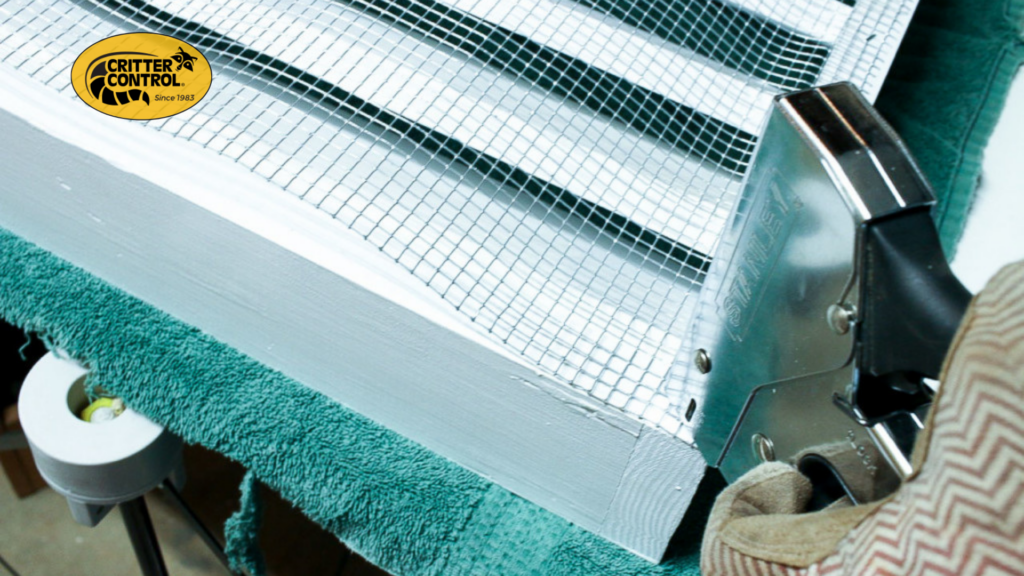How Attic Vent Screens Can Safeguard Your Home from Rodent Infestations
Rodent infestations are a common problem for homeowners, especially when mice, rats, and squirrels find their way into attics. Attic vent screens serve as one of the most effective defenses against rodent entry, protecting your home without compromising ventilation. These screens prevent rodents from nesting in your attic, which can help avoid costly damage and health risks.
This article explores the importance of attic vent screens in rodent prevention, how to install them correctly, and why maintaining them is essential for long-term pest control.
Why Rodents Target Attic Vents

Attic vents are necessary for proper airflow and moisture control, but they also serve as potential entry points for rodents. Mice, rats, and squirrels take advantage of weak or damaged vents to access warm, sheltered spaces where they can nest and breed.
Common Reasons Rodents Enter Through Attic Vents
- Gaps and Openings – Many attic vents have openings large enough for rodents to squeeze through. Mice can fit through holes as small as ¼ inch, while rats can enter through ½-inch openings.
- Damaged or Missing Screens – If the vent screens are torn, broken, or missing, rodents can easily slip through.
- Chewing and Gnawing – Rats and squirrels have strong teeth that allow them to chew through plastic, aluminum, and even thin metal screens.
- Nesting and Breeding – Attics provide warm, dark, and safe spaces for rodents to build nests and reproduce.
Without proper protection, attic vents become a prime entryway for rodents, leading to infestations that can cause severe property damage and health risks.
How Attic Vent Screens Prevent Rodent Infestations
Attic vent screens are small yet powerful barriers that serve as a first line of defense against rodents. These screens are designed to allow airflow while preventing pests from entering.
Key Benefits of Attic Vent Screens
1. Blocking Entry Points
By sealing off attic vents with strong rodent-proof mesh, homeowners eliminate one of the easiest access points for pests.
2. Preventing Nesting and Infestation
Rodents look for secure nesting sites inside homes. Properly installed vent screens eliminate attic access, forcing them to seek shelter elsewhere.
3. Maintaining Proper Ventilation
Attic ventilation is crucial for preventing moisture buildup, mold growth, and excessive heat. High-quality vent screens allow continuous airflow while keeping rodents out.
4. Reducing Property Damage
Rodents chew through wires, insulation, and wooden structures, leading to fire hazards and costly repairs. Installing vent screens helps protect your attic’s structural integrity.
5. Enhancing Overall Home Pest Control
Rodents that enter through attic vents can spread to other areas of the home, including walls, crawl spaces, and basements. Sealing attic vents is a crucial step in comprehensive rodent prevention.
Choosing the Best Attic Vent Screens for Rodent Prevention
Not all vent screens are created equal. Some materials are more effective than others at keeping rodents out. Here’s what to consider when choosing the best attic vent screens:
1. Material Strength
- Stainless Steel Mesh – The best option for durability and rodent resistance. Stainless steel is difficult for rodents to chew through.
- Galvanized Steel Mesh – A more affordable option that provides strong protection against pests.
- Aluminum Screens – While lightweight and rust-resistant, aluminum is not as rodent-proof as steel.
2. Mesh Size
For effective rodent prevention, the mesh openings should be no larger than ¼ inch. This size prevents even the smallest mice from squeezing through.
3. Weather and Corrosion Resistance
Choose vent screens that are:
- Rust-resistant to withstand humidity and moisture.
- UV-resistant to prevent deterioration from sun exposure.
4. Ease of Installation
Some vent screens come in pre-cut sizes, while others require custom fitting. Ensure the screen fits securely without gaps that rodents can exploit.
How to Properly Install Attic Vent Screens
Installing attic vent screens is a simple but essential step in rodent prevention. Here’s how to do it correctly:
1. Inspect Attic Vents for Damage
Before installing screens, check for:
- Existing holes or cracks in vents.
- Signs of rodent activity, such as droppings or gnaw marks.
- Loose or missing vents that need reinforcement.
2. Cut the Mesh to Size
Using heavy-duty wire cutters, trim the vent screen to fit the vent opening, ensuring full coverage without gaps.
3. Secure the Screen
- Use metal screws or heavy-duty staples to firmly attach the screen.
- Seal the edges with caulk or weatherproof adhesive for extra reinforcement.
4. Check for Weak Points
Ensure there are no small openings or loose edges that rodents could exploit.
5. Regularly Inspect and Maintain
Over time, weather conditions and rodent attempts may weaken or damage screens. Perform annual inspections and replace damaged screens as needed.
Additional Rodent Prevention Tips
While attic vent screens are highly effective, a complete rodent prevention strategy is the best way to keep your home rodent-free.
1. Seal Other Entry Points
- Use steel wool and caulk to block cracks and gaps.
- Install weather stripping around doors and windows.
2. Keep Your Attic Clean
- Remove clutter and nesting materials.
- Store insulation properly to reduce hiding spots.
3. Trim Overhanging Trees
Rodents use tree branches to access attic vents. Trim trees at least 6 feet away from your roof.
4. Secure Food Sources
- Store pet food and garbage in rodent-proof containers.
- Keep outdoor areas clean and free of food scraps.
5. Install Rodent Traps if Necessary
If you suspect rodent activity, use snap traps or electronic traps near potential entry points.
FAQs About Attic Vent Screens and Rodent Prevention
1. How often should I inspect my attic vent screens?
Inspect vent screens at least once a year, especially before winter when rodents seek shelter indoors.
2. Can rodents chew through standard window screens?
Yes. Regular window screens are not strong enough to keep rodents out. Steel mesh or heavy-duty vent screens are necessary.
3. Will attic vent screens prevent other pests like insects and bats?
Yes. Properly installed vent screens also block insects, bats, and birds from entering your attic.
4. What is the best way to keep squirrels out of attic vents?
Use heavy-gauge steel mesh, trim nearby tree branches, and ensure all roof openings are securely sealed.
5. Should I hire a professional to install attic vent screens?
If you are unsure about installation or have an existing rodent problem, hiring a pest control professional ensures proper screening and exclusion.
Installing high-quality attic vent screens is a crucial step in rodent prevention, protecting your home from infestations while maintaining ventilation. By choosing durable materials, sealing gaps, and performing regular inspections, homeowners can effectively keep rodents out for good.




